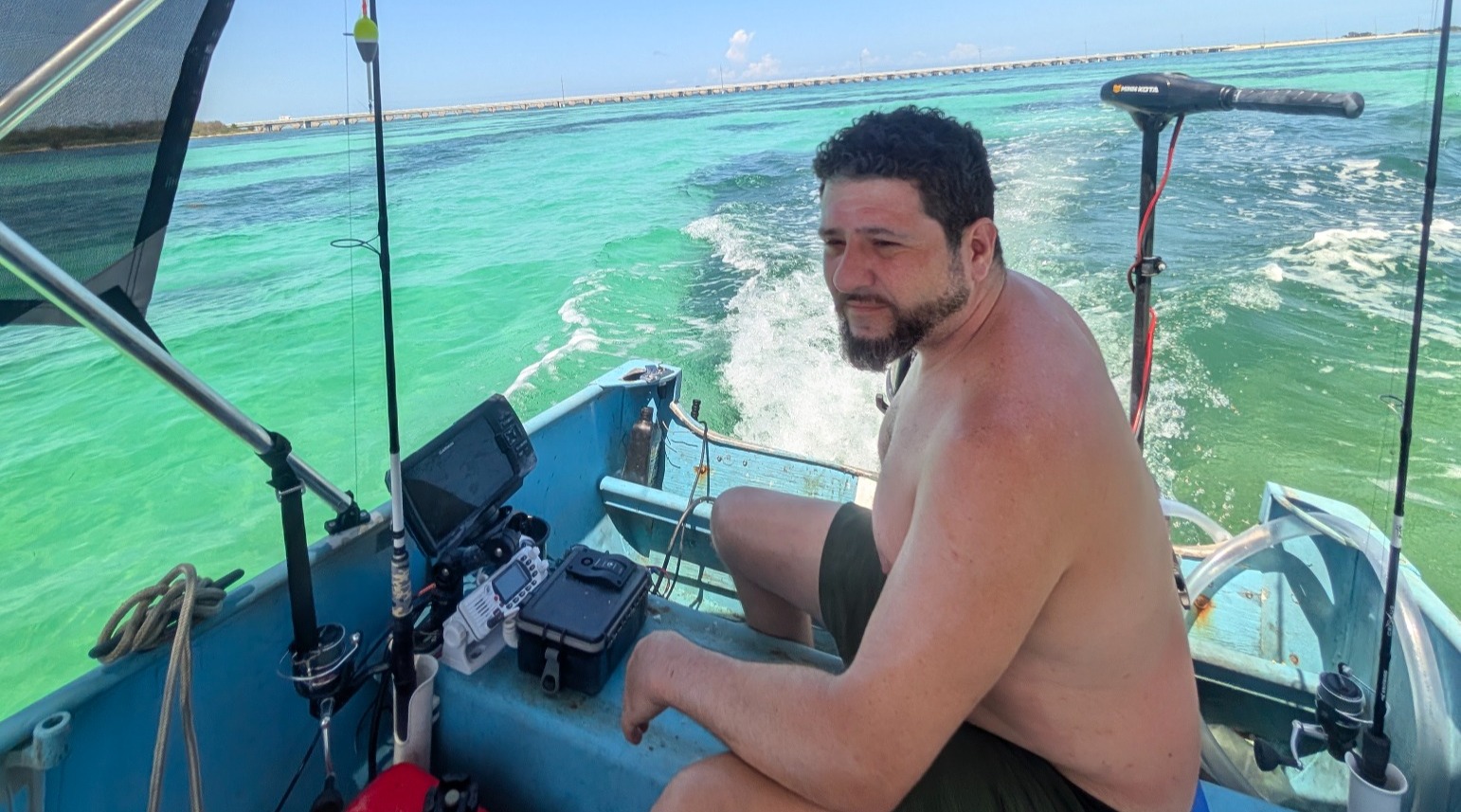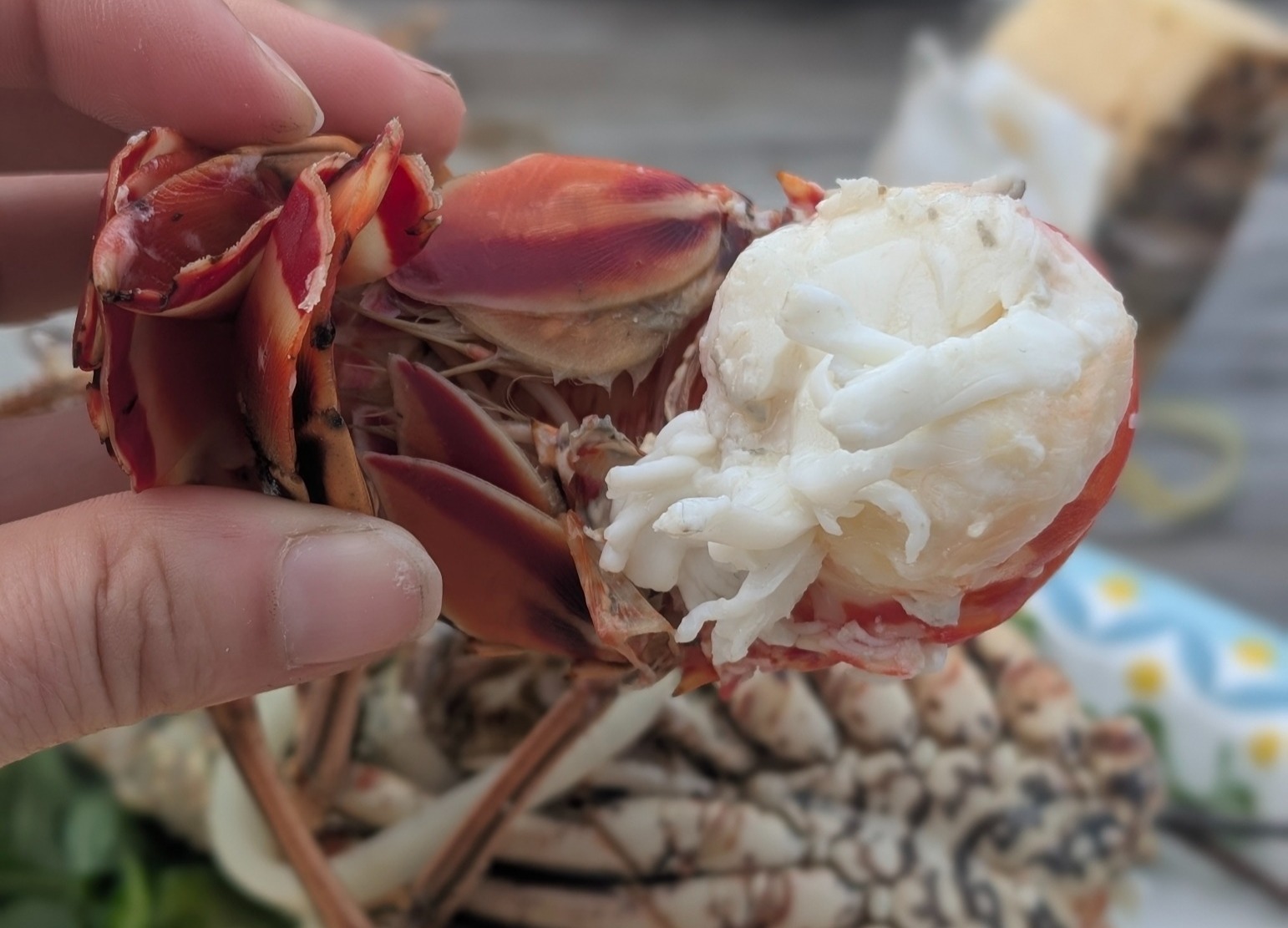
A Boat Virgin's Guide to Fishing and Lobstering
Although this was our first real boat, Ben was already an experienced fisherman. He knew all about rigs and lures and swivels, etc – what I referred to as “thingies.” We spent what felt like hours in the bait shop – longer than I could ever get him to spend in aTJ Maxx – across between an arts and crafts and a acandy store, with aisles of dangly shiny thingies and feathery thingies, little tubs of florescent putty (power bait), gummy eggs and gummy worms, which I squeezed impulsively while I waited for him to decide on the appropriate thingies for our prospective saltwater quarry.
He already owned a state-of-the-art Garmin Fishfinder. He used to mount it on his dinky orange Pelican kayak and chase the torpid trout around our local mill pond, which didn't entertain him for long since they don’t move much. Unfortunately the fish finder, like pretty much everything else in camper life, relied on battery, so it frequently died on us in the middle of a fishing trip.
But you don’t need a fishfinder to know that fish like “structure.” Not routine or deadlines or measurable objectives (although for all I know they do) but bridges, docks, shipwrecks, coral reefs, headlands, and underwater shelves.
Once you find the fish, you cut the motor and drop anchor. Simple enough. You take a heavy object, tie it to your boat with just enough rope to reach the bottom, and chuck it in the water.
Nope. Physics and geometry, never my best subjects in school, have to come along overcomplicate things. The anchor holds better if it's loaded horizontally, not vertically, which means you can’t just measure out six feet of rope ( plus the height of the bow) for six feet of water; no, you need to calculate the correct ratio of anchor line to water depth., normally 5:1 or 7:1. And in order for the anchor to bite, the line needs to be straight, which is easier said than done when the wind is pushing you one way and the tide pushing another, usually away from the fish and into a bridge piling or buoy that gets tangled up in your propeller.
Luckily, the first time we set out from Big Pine Key conditions were calm. We chugged along at the blistering speed of 6 mph, headed to a spot about 2 miles southeast where our nautical map claimed there were coral heads. The water was clear and you could read the depth based on the contoured shades of turquoise, from deep topaz pools to translucent teal where it touched the shallow sandbars, and gray-green where seagrass streamed below the hull.
As we approached the spot on the map, lumpy red arcs began to emerge between the static lines of sea grass on the sonar. We were about ¼ mile off the rocky shoreline, which was dotted with a few oversized houses mounted on concrete pilings, not enough to quite justify the deceit, or tragedy, of spending that much money on a house where there should be no houses.
We saw a few other boats anchored in the near distance. A good sign. As we prepared to drop anchor, we saw heads pop up in the water between us and the nearest boat, then a hand, holding something triumphantly overhead like a touch-down winning football.
“Almost got my finger!” they shouted.
Lobsters!!
This was it. This was what we came for. We put on our wetsuits, fins and snorkels. Ben gathered his spear fishing gear and I gathered my camera gear.
Below the surface was blue and quiet. We glided over a bed of flowing seagrass until it dropped away to a sandy bottom. Ben pushed his tickle stick under the shelf but nobody was home. We swam on, farther from the safety of our little boat. The ocean floor was dotted with seaweed and dark rocks pockmarked with tiny holes and speckled in lichen-like patches of algae where small fish nibbled. Visibility was good, about 20 feet, but I couldn't help imagining shark's toothy smile suddenly emerging out of the blue abyss beyond. I wasn't actually that worried about being attacked, but jolt of primal fear upon coming face to face with one.
Over the last couple months Ben had logged as many hours watching diving videos as he had watching Jaws as a child. The sharks on YouTube were much more interested in eating peoples' fish than in eating them. Occasionally they'd come up and snatch the fish right out of their hands, but there were no reports of them ever taking the hands with them.
“Remember, you are the apex predator,” he told me.
"Maybe I'm just an apex gatherer," I said.
I was distracted from worrying about sharks by pretty fish, mostly small, but of the type I’d only seen in saltwater tanks: bluish black angel fish, black and yellow striped sergeant majors and a lionfish. I hovered above a kidney shaped coral, watching the lionfish paddling its frilly fins, when I saw a pair of spiny antenna poke out from under the coral.

Lobster! I signaled frantically to Ben until he swam over. They played ring around the coral until it escaped, scooting backwards across the ocean floor, raising little clouds of sand. It were lobsters under almost every live rock and coral head in a 40 foot radius. We contented ourselves on catching two for dinner and returned triumphantly to Big Pine Key RV.
As native New Englanders, who grew up suckling on Maine lobsters claws, we didn’t have high expectations for Florida lobsters. They are more ornate in appearance, speckled like snakeskin with patterns of red, maroon and biege, crowned with spiny antennae like a Star Wars queen. It's as if they're trying to make up for not having claws. The meat our lobsters did have was sweet and juicy in its own right, if nowhere near the standard we're accustomed to.
We could wait to go get more, but the forecast was rain and rising wind.
Post a comment